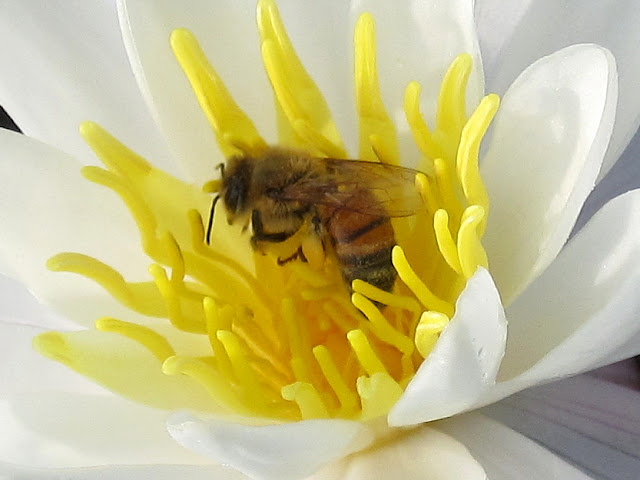As I kayaked on one of those calm mornings it seemed the birds were out enjoying the morning as much as I was. First I spotted a Great Blue Heron gliding over the water.
I always think of herons as wading birds because they spend so much time in the shallow water searching for frogs or fish to swim by their skinny, stationary legs which carefully imitate stalks of plants growing in the lake. But they do make their nests in tall trees, and will also sit high in a tree to observe their world. When airborne they do their best to minimize air resistance from their long gangling appendages.
 |
| A nice streamline form as it gains altitude. |
I was able to track this one as it rose up and prepared to land at a prime vantage point to watch out over the lake.
 |
| Extend landing gear. |
 |
| Flare wings on final approach. |
 |
| Safely in the hangar. |
The next bird showing off its flying skills was an Eastern Kingbird.
I saw and heard many of these as I paddled that morning, seeing them flit out to catch a bug and return to their perch. I stopped at one point to watch one of them go out on a few breakfast sorties.
 |
| On the hunt. |
The flying skills of these birds are pretty amazing, especially when you think that they never studied aerodynamics or flight control - it's all just natural talent.
 |
| Bogey off to port! |
 |
| Gotcha! |
 |
| Back to the perch. |
 |
| The kingbird knows how to flare also. |
 |
| Just a few moments and it will be off again. |
Sometimes the purpose of their mission was to repel another bird from its hunting grounds - that's when they were most noisy.
 |
| These are not a couple of love birds - one is letting the other know "these are my insects". |
The next flying object out on the lake wasn't a bird, but a bee - a honey bee collecting pollen from the pond lilies which seem especially abundant this summer (maybe they like the weather also). Morning is the best time to see these lilies as they bloom early in the day and close up in the heat of the afternoon, which the bees seem to know. Here's one coming in to inspect a prospect:
 |
| Note the pollen sac it's carrying. |
It's clear it's already visited a few other flowers this morning. It hovered a bit,
then decided it liked what it saw and went in.It climbed down among the stamens to extract all the pollen it could carry and still get airborne.

All this pollen collection and sharing from flower to flower ensures fertilization to generate new plants. Deep down in the bottom of the lake are the rhizomes that anchor these plants in place - until a muskrat or beaver comes along and eats the root, continuing the endless food cycle of nature. Here's an interesting fact about the White Pond Lily: According to the Lady Bird Johnson Wildflower Center the stalks contain air channels which allow oxygen collected by the leaves to travel down into the roots in the bottom of the lake.
It is such a pretty flower.
Nature does give us us the most beautiful sights.
 |
| Summer sunset in New Hampshire |
P.S. Harold and Betty are doing fine, I saw them yesterday. I'll try to get pictures next week - they're getting big!







No comments:
Post a Comment